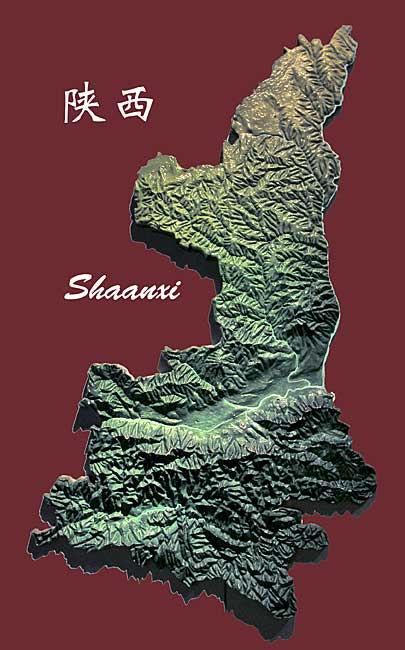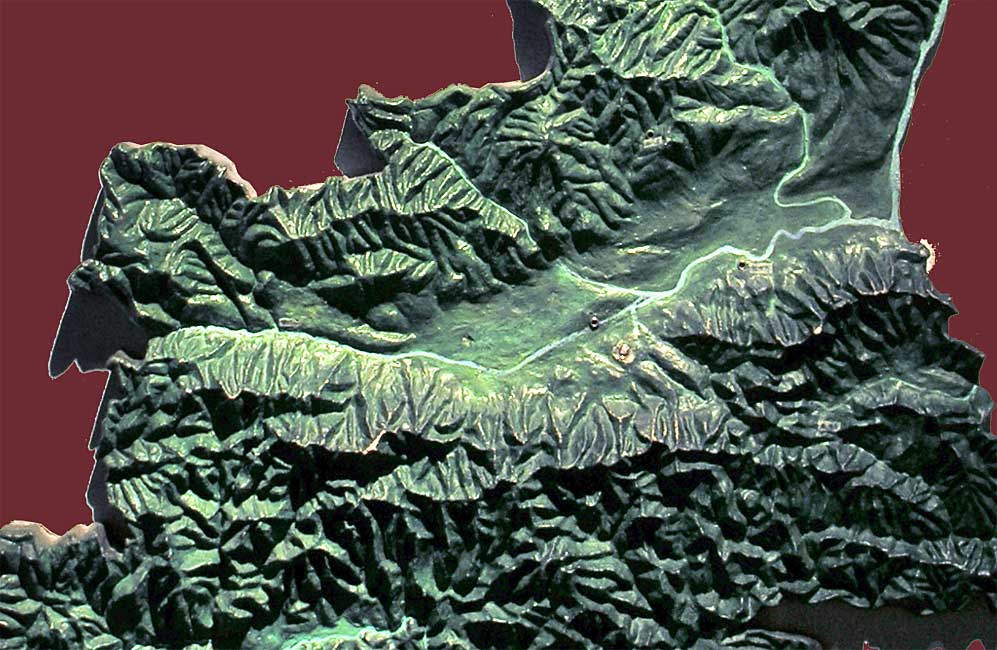 |
| The Wei River 渭河 (Wèi Hé) cuts through the mountains in the center of Shaanxi on its way east to join the Yellow River as one of its major tributaries. The Wei River Valley and the Yellow River plain were home to some of the ancient civilizations in China. The abundance of water, good fertile land, and plentiful game made it an ideal place for man from the Paleolithic through the Neolithic eras. The area is part of the Loess Plateau; 123,554 square miles of loose wind-borne dust that covers all or parts of the provinces of Shanxi, Shaanxi, Gansu, and Ningxia. The aeolian deposits are blown from mountains and create a rich soil.
The Wei River is a little over 500 miles long. Its source is in the mountains of Gansu, not far from Lanzhou and the Yellow River. Only 125 miles separates the two rivers at that point, but they don't join until the Yellow River flows south and is fed by the Wei River in the east on its way to Zhengzhou. The Wei connects the area around Xi'an with both the overland route from the west, called the Silk Road, and with the civilizations that developed around Anyang in the east. A natural corridor was formed through which primitive man could move and migrate. The loess created deep friable soil that was easily planted. Very simple implements were necessary to break the top crust and form a furrow in which to plant seeds. The soil is rich and contains enough clay to allow molding and building. In many areas, caves were dug into the loess to provide dwellings. The Neolithic Yangshao culture thrived under these conditions and established settlements through the regions. |
 |
http://hua.umf.maine.edu/China/xian2.html
Last
update: March 2010
© Marilyn Shea, 2010